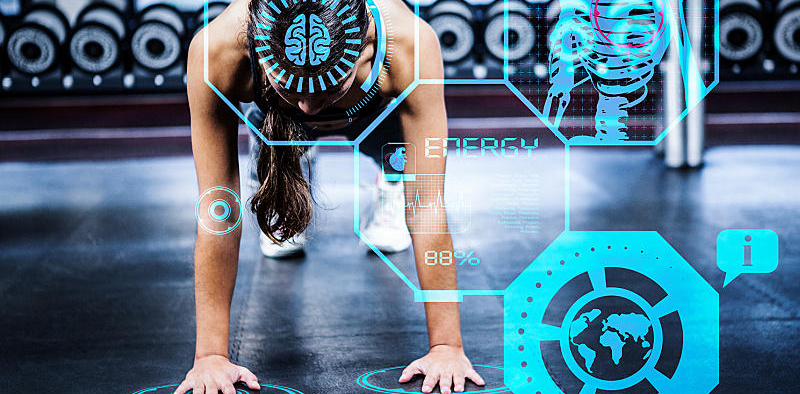How Technology Has Revolutionized Sports Training

In the not-so-distant past, sports training consisted of running laps, calisthenics, and plenty of practice. But like everything else, it too has evolved and technology has played an enormous role in its evolution. The results have been astounding and the data-driven conclusions have allowed everyone from personal trainers to physical therapists to continually improve their methods and apply customized training techniques based on an athlete’s goals.
Virtual Reality has Become a Necessity
Professional sports and gambling are often associated with each other because wherever there is a sporting event, you can be certain someone is willing to make a bet, and take a bet, on its result. And while wagering on professional sports is quite common, the athletes who get paid large sums of money to perform aren’t fond of betting their careers on archaic training methods or outdated equipment. Sports betting stats are rife with injury reports and the more time spent on the sidelines, the worse it is for a professional athlete.
One of the newest entrants into the modern world of sports training is virtual reality, aka, VR. Video gaming was one of the first and biggest commercial rollouts of VR but it didn’t take long before savvy and creative trainers latched on to this new technology as a means to improve the performance of their clients.
NFL trainers and coaching staffs have seen the benefits of using this immersive technology as a conduit to tracking head movements, reaction times, and eye-hand coordination without any chance that their subject could be injured. Virtual Reality headsets have sensors built into the hardware and collect all the necessary data that often separates great athletes from merely good athletes.
But VR is not only for professional athletes. Consider the words of Chris Milk, founder, and CEO of Within, in his interview with Nilay Patel of The Verge. Milk’s newest workout app, Supernatural, runs on Oculus Quest and is the newest workout craze because it blends unique, uplifting music with a virtual setting and makes working out much more fun.
“I don’t know the last time you were on a treadmill and half an hour seemed like 15 minutes. It’s certainly never happened to me. We thought, in the process of thinking about how we use this technology for this other use case, that definitely went into it.
“There’s something about your perception being removed from your physical body in space that just makes stuff hurt less, but it also makes it easier to push yourself harder when you’re doing a cardio workout. It does hurt less and yes, it’s part of the fact that you’re basically playing a sport that is fun.
“There’s a major difference between being in a gym and a coach or instructor saying like, “Okay, we’re going to do 50 squats in a row. Here we go. Ready? One, two.” That experience is totally different than surfing and going into a tube (wave) and squatting and holding for 20 seconds while the barrel forms around you, but the physical benefit and activity is the same. You’re never in the tube going, “How long am I going to have to hold the squat for?” You’re just enjoying the experience.”
 Injury Recovery
Injury Recovery
We see professional athletes extending their careers by adhering to strict diet regimens, year-round workout commitments, pliability exercises, and working with a team of specialists to recover from injuries as quickly as possible when they do occur.
Technology has played an enormous role in today’s professional athletes recovering from severe injuries that would have once spelled the death knell of their careers. But whether an injury is a mild tweak of a hamstring or a torn labrum, doctors and trainers today understand how to get their pro athletes back on the field, court, ice, or wherever they ply their trade.
Wearables are one of the most fascinating and innovative technological advances in sports training therapy. These bendable pieces of data consumption can be worn all over the body and every movement elicits information that can be used to compare and contrast an athlete’s current form to his or her pre-injury motion.
This technology can pinpoint an athlete’s heart rate during various stages of performance as well as how muscle groups fare from minimum to peak loads. Wouldn’t a coach or trainer love to know at what point an athlete’s muscles are fatigued to the point where injuries could become an issue? Pain thresholds can be determined and can also be increased when pinpointed through the technological triumph known as wearables.
Ageless Legend
When it comes to advanced training techniques and incorporating avant-garde technology into his daily routines, there is no better example than NFL quarterback, Tom Brady. The seven-time Super Bowl champion stated that he knew at age 25 he needed to change up his routines and incorporate a healthier diet combined with workouts focusing on stretching and pliability.
Tom Terrific will be 44 when he suits up for the Tampa Bay Bucs this year, and ready to defend the Super Bowl he brought home to the Bay area last season. “I’ve tried to just take care of myself through learning through a lot of positive and negative experiences with that. When you’re in a locker room for 17 years, you kinda learn what to do and what not to do and what works for you. I’ve found probably a unique way that’s a little outside the box that’s really worked.”





